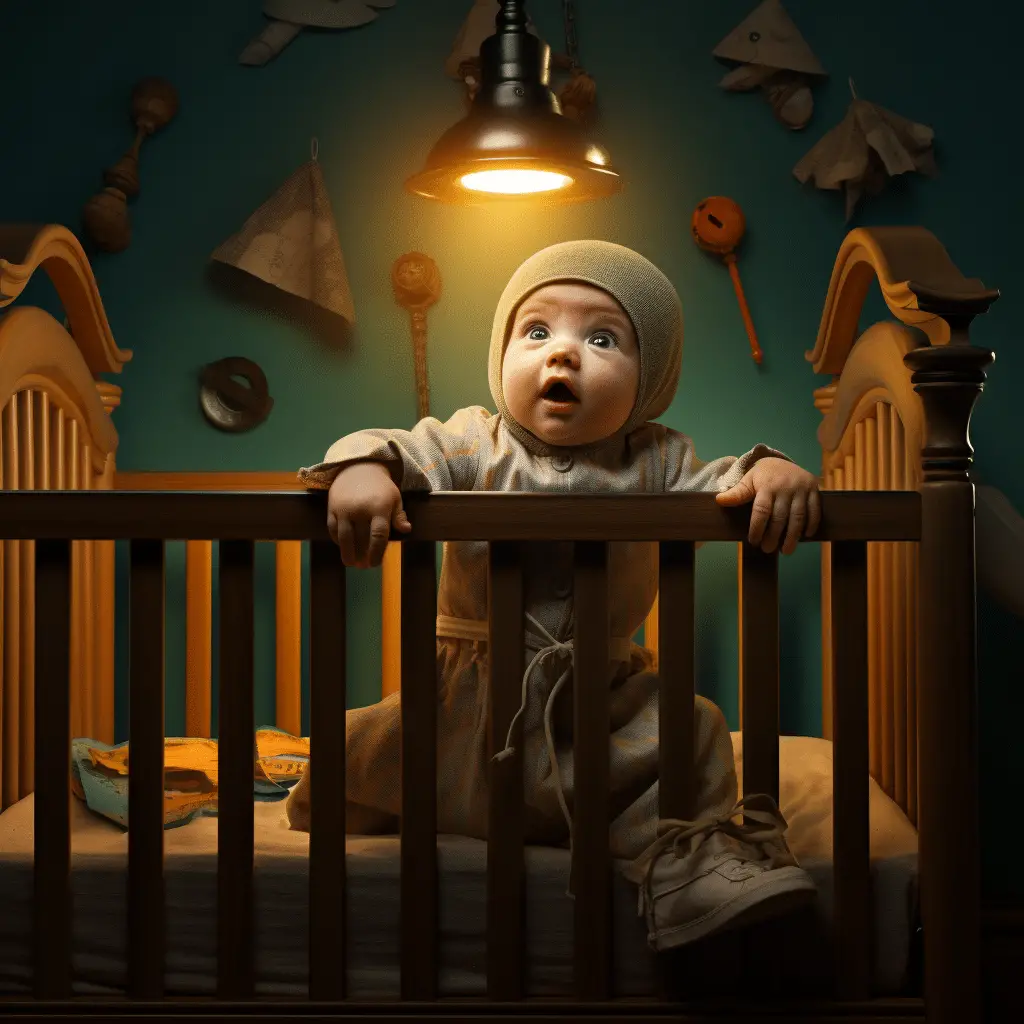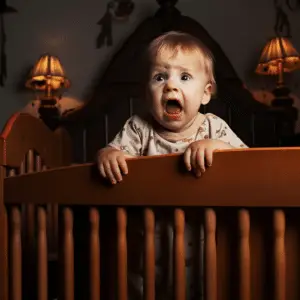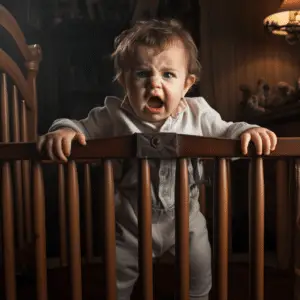
Will I Break My Baby’s Crib If I Get In?
Will I Break My Baby’s Crib If I Get In: the potential of accidentally destroying your baby’s crib may temper your desire to join them in their nursery.
Related: BABY SHOULDER POPPING WHEN PICKED UP
But before disregarding this notion completely, it’s essential to understand the facts surrounding this matter. In this article, we seek to answer the question, “Will my getting into the crib with my child damage their crib?” offering an extensive rundown of what to consider before making a move.

Will I Break My Baby’s Crib If I Get In?
No, you won’t put your little one at risk by entering their crib – the structure itself is incredibly safe and tolerant. Even so, there are still cause for concern when it comes to co-sleeping with a baby in a shared cot. While on the face of it, the crib may appear resilient, there are other matters to be aware of when bedsharing.
Understanding Crib Safety Standards
When it comes to the safety of infants, it is absolutely essential that we understand the regulations regarding baby cribs. The Consumer Product Safety Commission (CPSC) took decisive action in 2011 by introducing stringent regulations across the US to guarantee that these cribs adhere to their design, testing, and labeling standards.
The core principle of this legislation is that slats, rails, and mattress support must possess enough strength and resilience to resist significant pressure and prevent accidental collapse or failure. Without firmly establishing this attribute, there is substantial risk that our vulnerable little ones could be harmed.
Factors to Consider Before Getting in a Baby’s Crib
Cuddling up with your little one in the crib can be an inviting prospect, but it is essential to examine a few conditions before slipping inside.
Start by ascertaining the weight limit of the cot; typically most models can accommodate to no more than fifty pounds. If your or your partner’s heft surpasses this amount, you are better off foregoing getting into the bed together.
Related: DROPPED PHONE ON NEWBORN HEAD
Additionally, if the infant bed has been in use for some time now or passed down through family members, ensure that it meets all modern safety criteria.
Furthermore, glance over the construction of the children’s furniture to find any indications of damage or wear, as some designs are not as strong as others. Ultimately, take into account your baby’s age and development stage — when they’re still in their nascent years, it might be wise to keep out of the bed.
Benefits of Getting in a Baby’s Crib
When contemplating the potential risks of sleeping in the same crib as your infant, it’s important to also consider the advantages. Numerous parents elect to spend time with their little ones behind bars, and here are a few reasons why:
Bonding: Snuggling up with your baby while they slumber can create a unique bond between the two of you. It encourages closeness and engenders a sense of safety for the both of you.
Sleep: If your child struggles to fall asleep, joining them in the crib might help ease them into a calmer state which will enable them to drift off more easily.
Health Benefits: Research has demonstrated that physical contact between parent and child has multiple health benefits for both.
How Much Weight Can a Crib Support?
The strength of your crib is absolutely paramount when considering how much weight it can support. Many instances range between 35 to 50 pounds, which is usually the upper end for a cradle meant to accommodate infants and toddlers ages 0-4. Going beyond this range is incredibly rare. Parents should therefore refrain from jumping into their child’s crib.
Can Toddler Beds Hold More Weight Than Cribs?
As kids grow, it’s essential to keep in mind that their mattress needs to as well. Toddler beds are designed to hold up to 50 pounds and the average child reaches this weight around the age of 7.
Anything under this weight is safe in a crib but once they reach it, transitioning to a toddler bed is necessary for safety reasons. Cribs which convert into bigger beds are also an option, however it’s important to pay attention to the recommended weight capacity for these models; otherwise, you could be at risk of breaking them and putting your child in harm’s way. To avoid any incidents, make sure you switch out the mattress when your little one is ready.

Frequently Asked Questions:
Why does my baby cry when I put them in their crib?
Your child may be crying in their crib for a number of causes. Hunger, fatigue, or a wet diaper could all be contributing to their distress. It’s possible that your baby is struggling with emotional detachment or physically uncomfortable. Soothing teething pain or lingering discomfort are also viable possibilities. To pinpoint what triggers the wailing, take note of cues and regularly evaluate your infant’s circumstances.
It’s essential to establish a reliable bedtime routine too. Make sure the baby has recently eaten and is wearing clean diapers.
If they continue to weep, consulting a pediatrician may be wise.
What is the most common injury due to cribs?
When it comes to cribs, head and facial injuries caused by falls often top the list of common injuries. These mishaps can occur when a tot manages to climb from the crib or when it is incorrectly assembled.
To guard against this, always check that the crib follows safety standards, assemble in accordance with manufacturer instructions, and inspect regularly for any damage. Additionally, take caution against loose bedding–or other soft items in the crib–which pose a risk of entrapment or suffocation. Heed the safety guidelines offered by your crib’s maker to help avoid incidents of harm.
Can A Child Use a Playard In Place Of A Crib?
When it comes to temporary sleeping spaces, playards—or playpens—may be portable and convenient, but they don’t quite measure up to the security standards of cribs.
They are better suited for fun or short naps because they aren’t built for long sleep.
While a child may still rest in a playard, it’s unlikely that they’ll feel as secure and comfortable as they would if sleeping in a traditional crib.